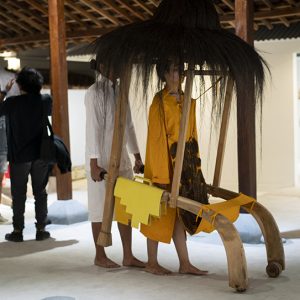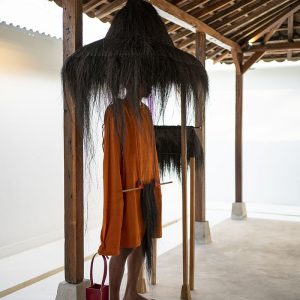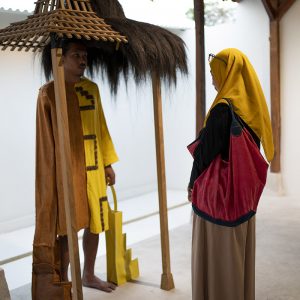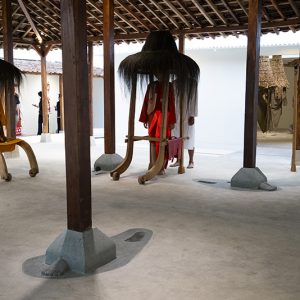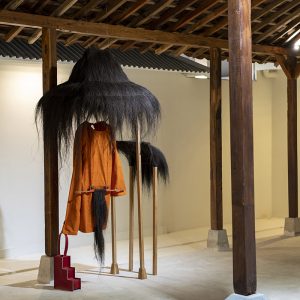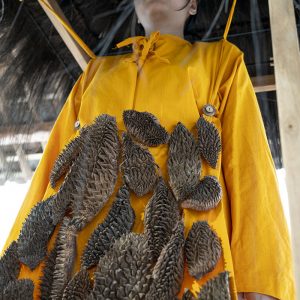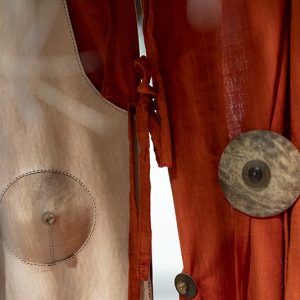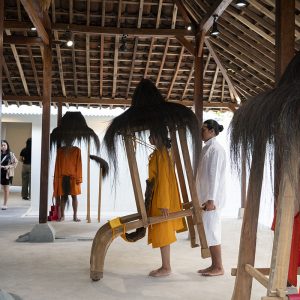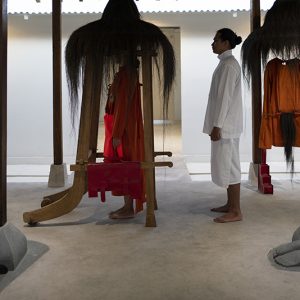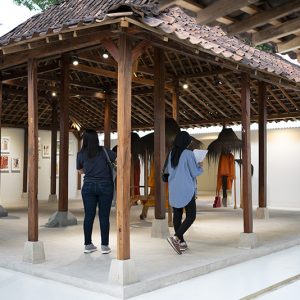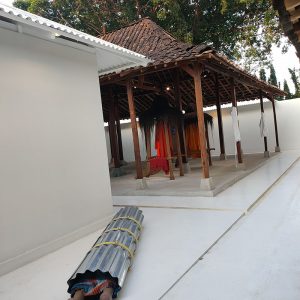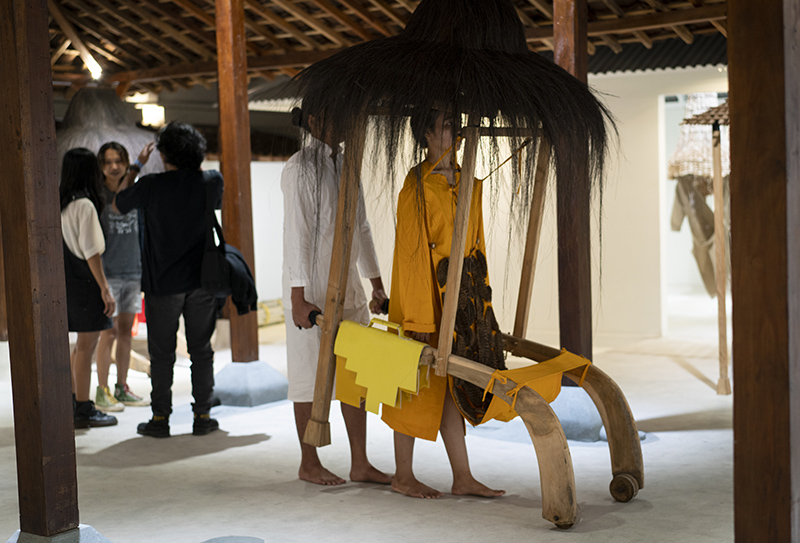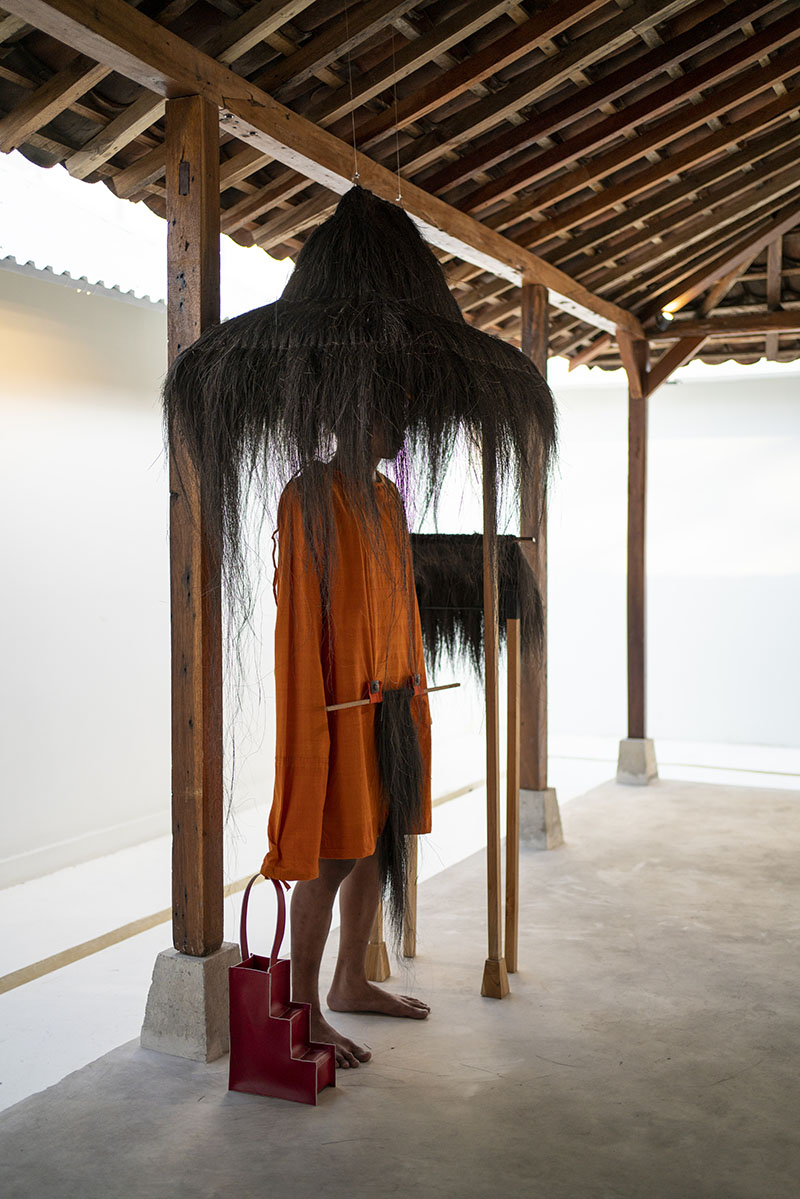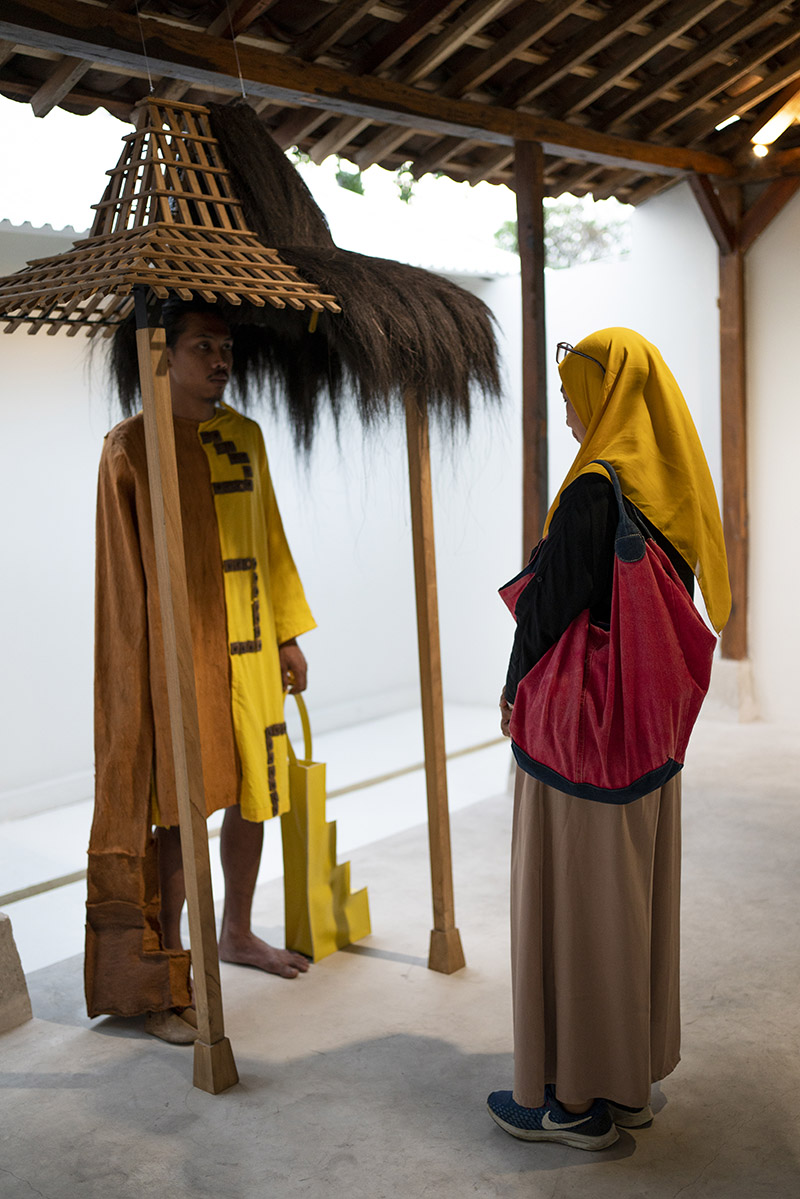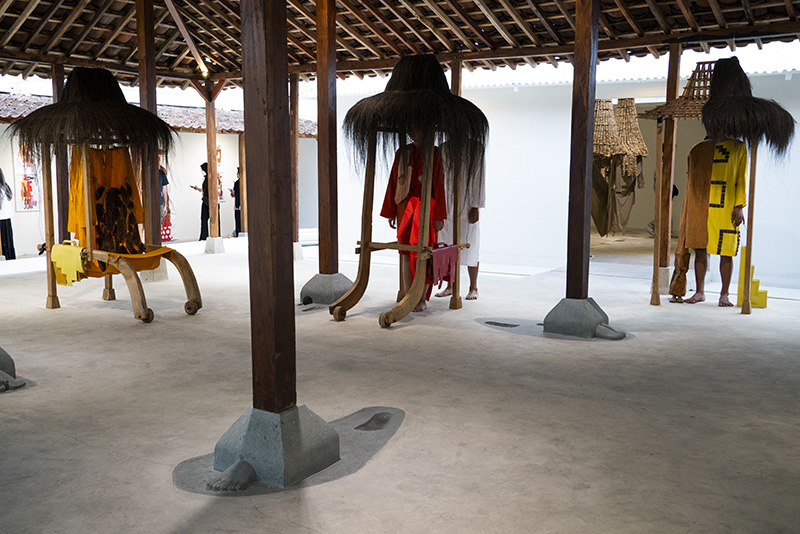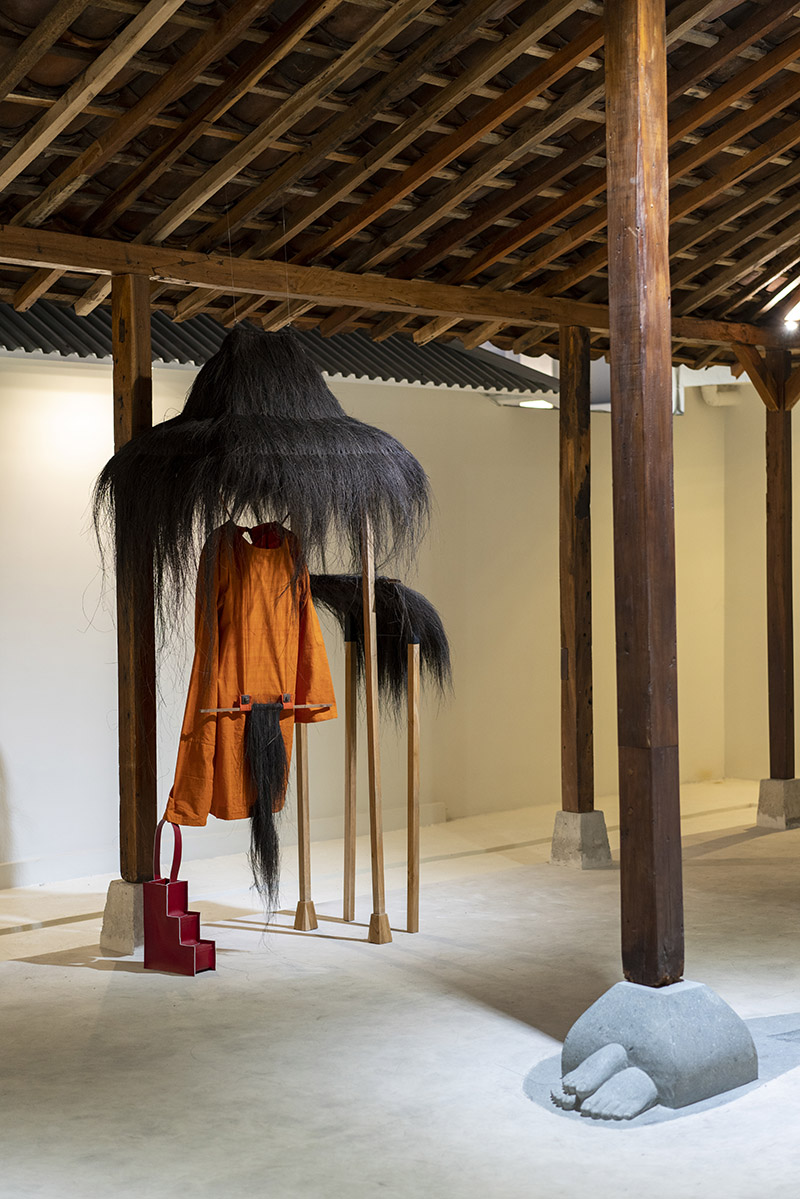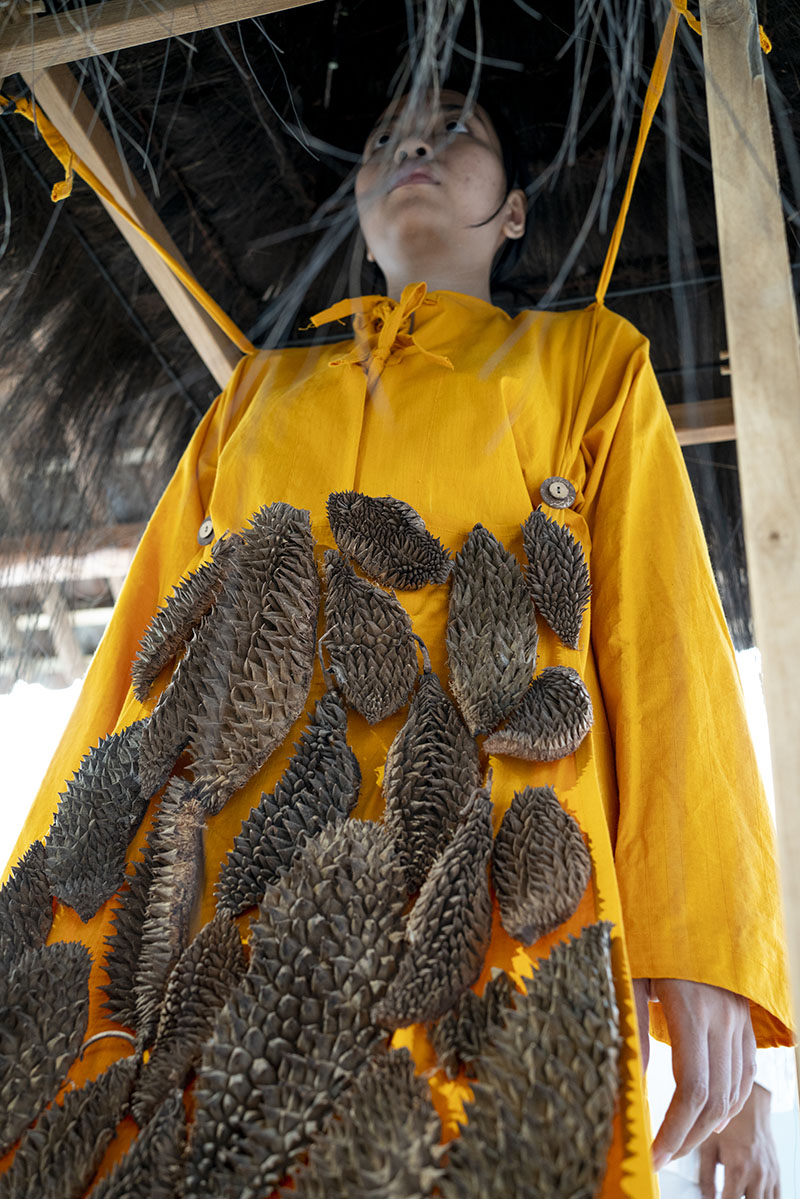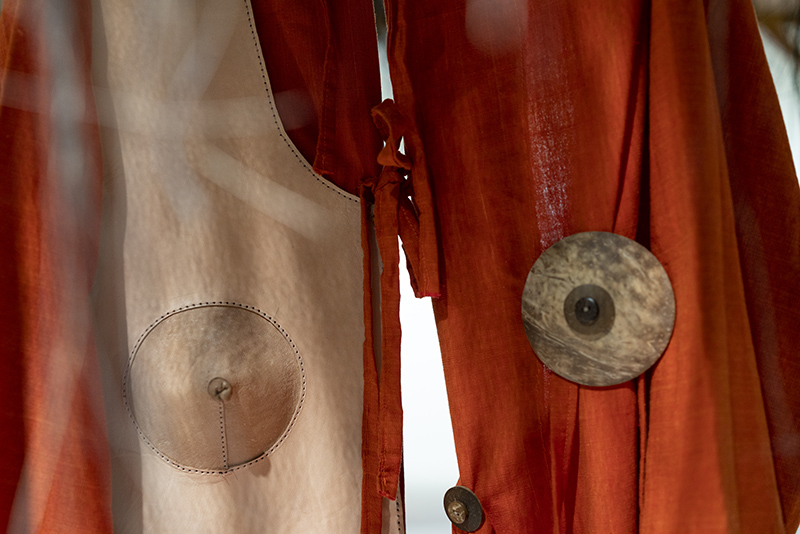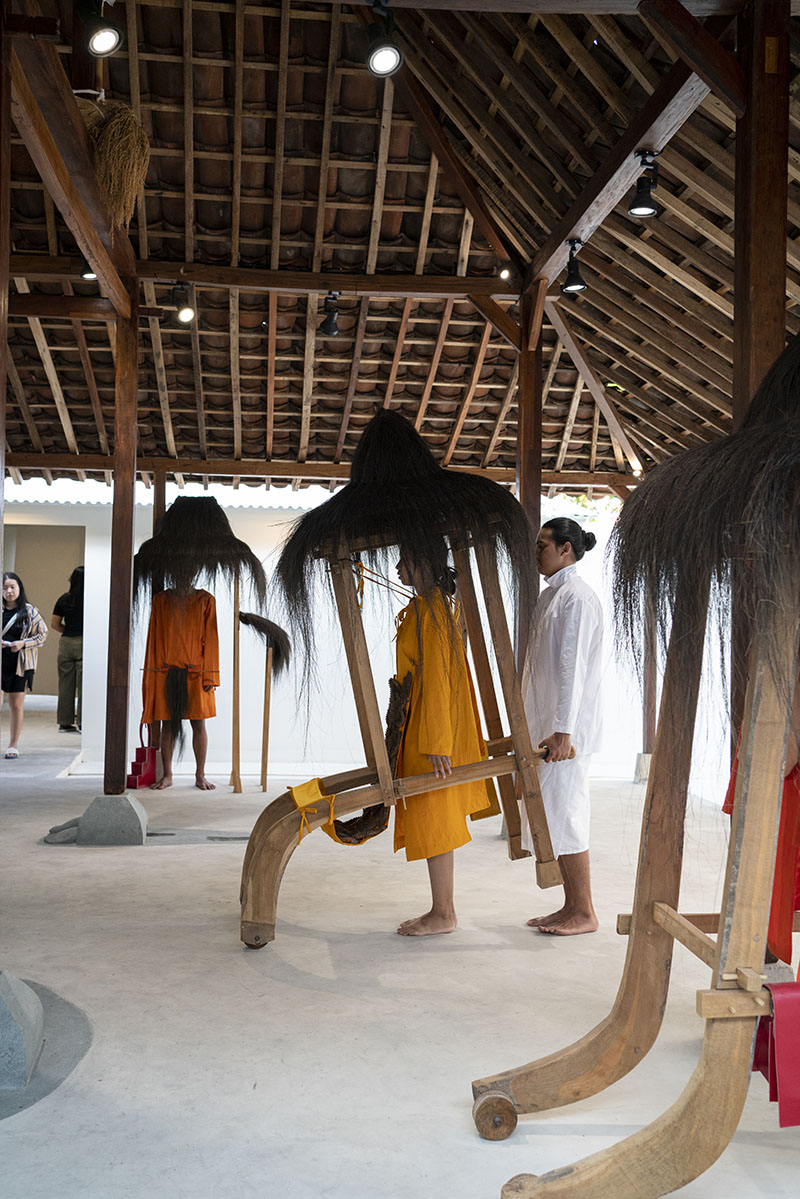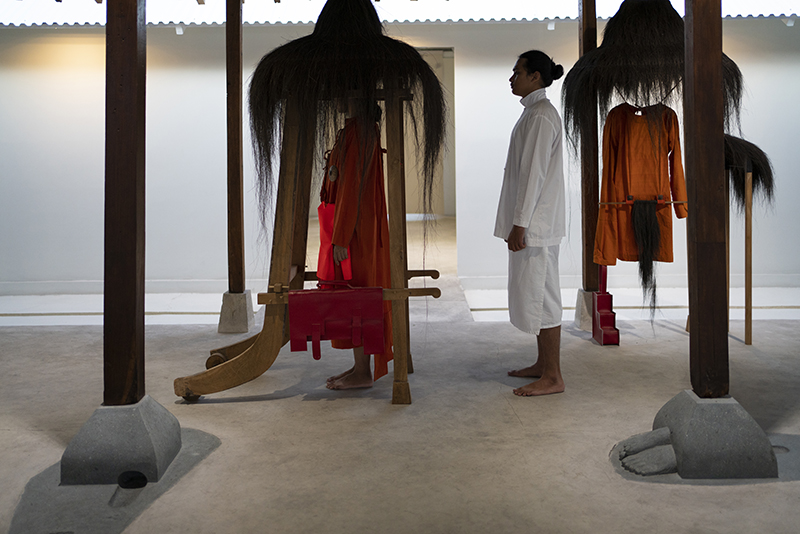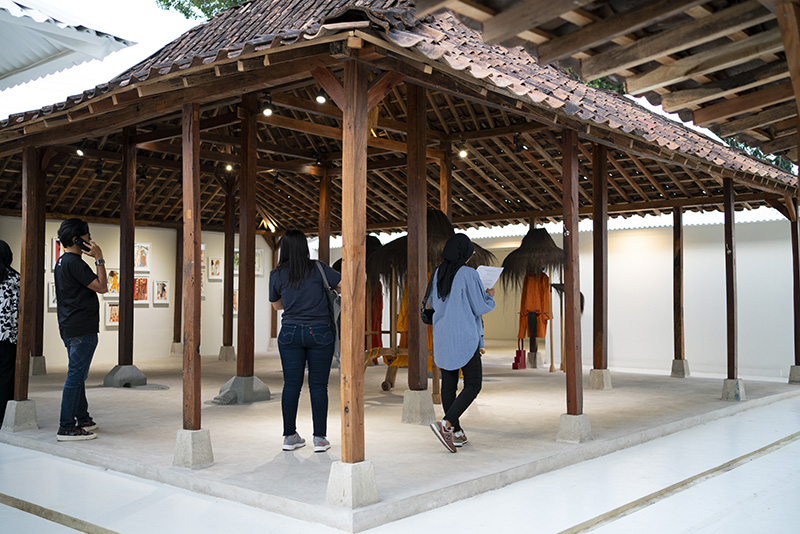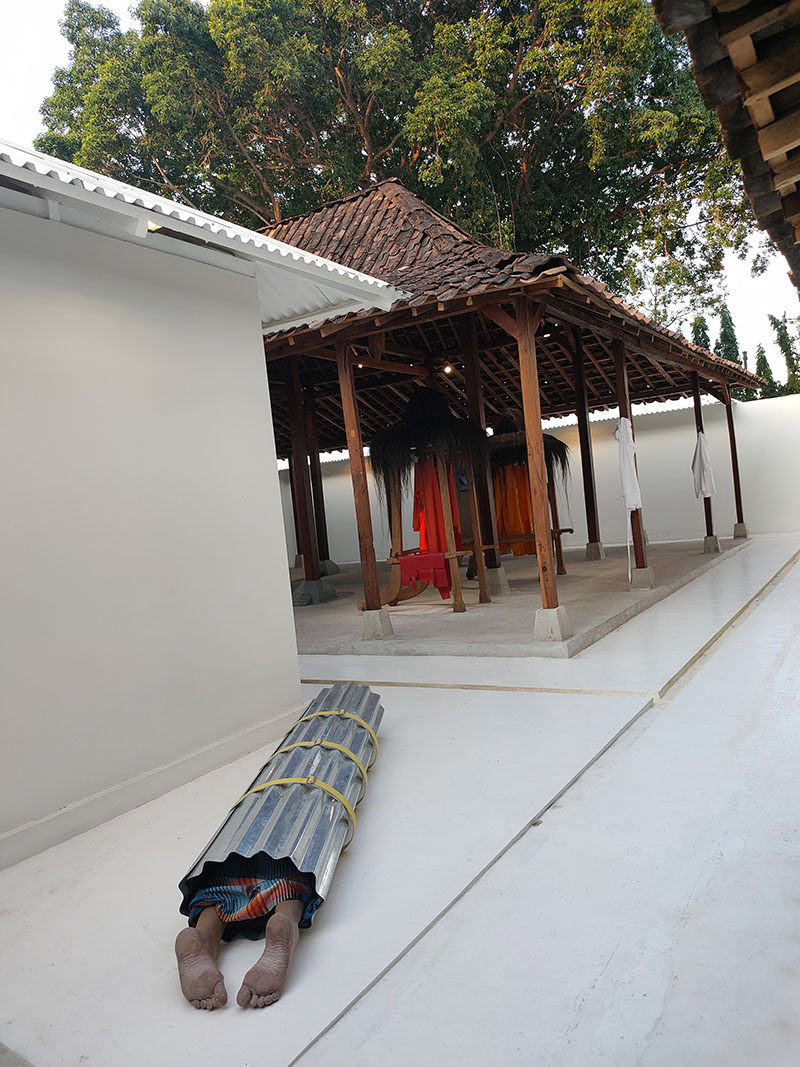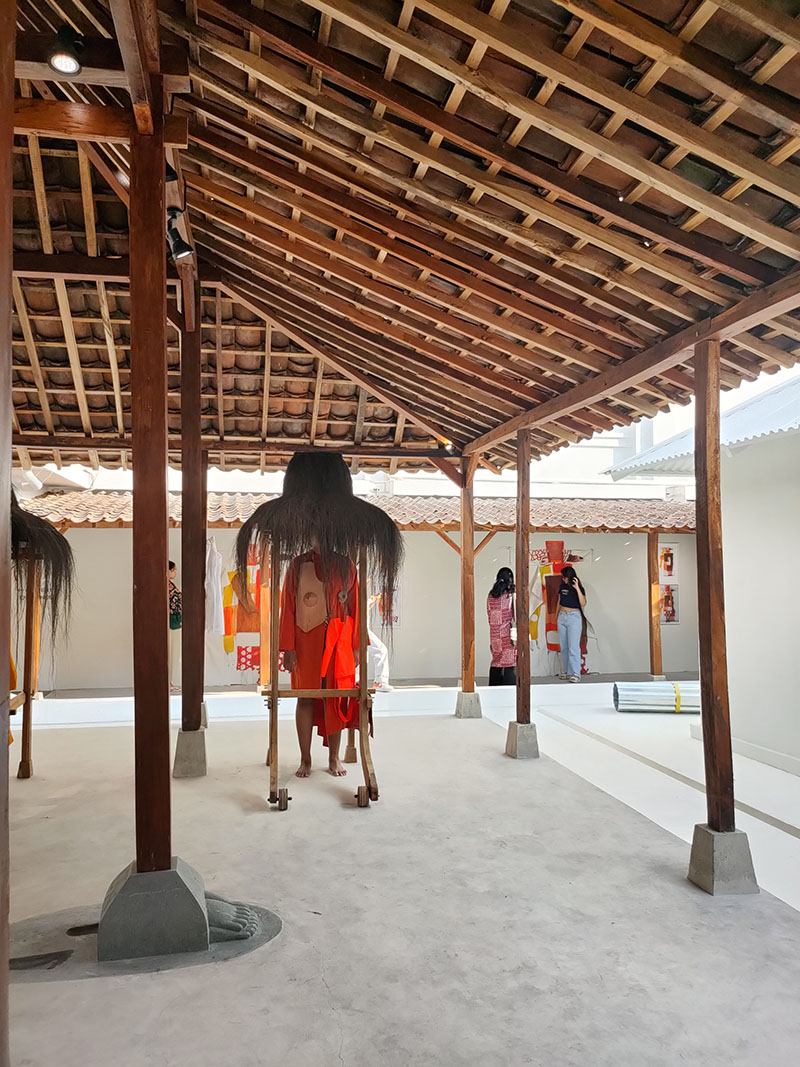Text by Nadiah Bamadhaj, (co-curator ArtJog 2023 together with Hendro Wiyanto)
Ourskirts-Trouble skirts (2023)
The four installation works in the center area represent the basic shape of the original limasan where they are located. At the same time, these works question the notion of permanence versus temporariness or displacement from this site and its relationship with the body. The performer’s body “wears” the form of a limasan and is within its structure, as if they merge into statues reflecting the exhibition room as a site-specific work. This is the dominant tendency that Adeline Ooi calls the “one-body structure” in Mella’s works, apart from their development towards more hybrid forms.
The audience and performer can move around the two works in Outskirts-Trouble skirts. The work’s title implies that the mobility of the limasan is useful in solving problems.
For the Javanese, limasan is an asset that can be liquidated when the owner faces financial difficulties. Even the teakwood beams can be sold in case of a crisis.
The wood that Mella used was a wood that the farmer used to plow the field, implying its territoriality with rural land. The sculpture’s roof is made of ijuk (palm fiber) obtained from Bali and Java. In this work, ijuk refers to the head and hair, wild and unconquerable, like the character of Rangda in Balinese mythology, which relates to the upper world. The body’s covering is made of cotton, handwoven with natural dyes, with additional elements such as durian skin for protection.
This work invariably asks us to consider the two opposite conditions—its dismantling in times of difficulty and its availability for a dwelling that encompasses the life cycle and a form of protection from natural events. All materials used in Outskirts-Troubleskirts are specially selected based on their eco-friendliness.
Outskirts I and II (2023)
In Outskirts I and II, the body is indirectly bound to the limasan. These installations can be interpreted as structure within structure. Replicating Mella’s previous works, these works serve as a sacred or spiritual building. During the building of the original limasan on the ARTJOG site, special rituals were performed to ensure the smoothness of the construction process and prayers for the safety of those who built and inhabited it.
Limasan, as an ancient building in Java, also symbolizes a spiritual sign of ascension from the lower world upwards through the stages of birth, life, and death. Like the performers standing upright within the limasan, the pillars symbolize the middle world or the cycle of life with the inevitable destiny of detachment and dismantling.
In this sense, for Mella, gentrification is the recycling of limasan as a form of architectural heritage that we can reconfigure or reshape, reflecting the inevitability of change. The overall choice of the limasan structure offers themes of belief, protection, spirituality, gentrification, class systems, and environmental concern.
